Overclocking
The overclocking with air cooling is terrific when you can withstand the fans working at 2500 rpm at maximum speed. But even so, the clock rates are the best we've seen so far with an air-cooled GTX 1080 Ti, even in a closed housing. GPU lottery and selection by the manufacturer make it possible.
With the help of the MSI Afterburner Extreme, the increase of the power target to 116% and a slight voltage increase, there were even 2088 MHz in it as long as the chip was warm below 40°C. But even so, the result can really be seen, because 2063 MHz can also be created with 65% fan input and without voltage increase. At least when the chip is playing along.
Temperatures and clock rates
First, we compare the achieved start and end values for temperatures and GPU clock (boost) in tabular form:
| Initial |
Final value |
|
|---|---|---|
| Open Benchtable | ||
| GPU Temperatures |
40 °C | 65 °C |
| GPU Clock Open | 2012 MHz | 1962 MHz |
| Ambient temperature | 22 °C | 22 °C |
| Closed Case | ||
| GPU Temperatures |
42 °C | 68 °C |
| GPU Clock Closed Case | 2000 MHz | 1949 to 1962 MHz |
| Air temperature in the housing | 25°C | 39°C |
| OC (Open Benchtable) | ||
| GPU temperatures (2500 rpm) | 28 °C | 48 °C |
| GPU clock | 2088 MHz | 2063 to 2076 MHz |
| Ambient temperature | 22°C | 22°C |
Overview Graphs: Temperatures vs. Clock
For better illustrations now again the respective courses considering our timeline of a total of 15 minutes each for the warm-up time.
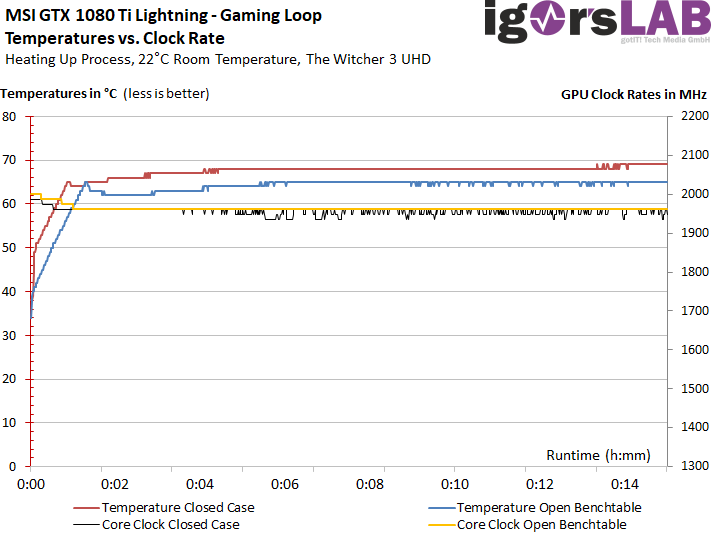
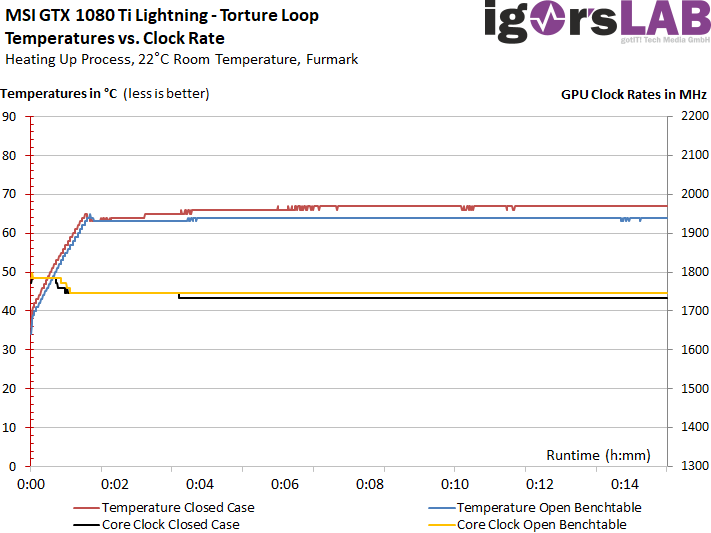
Thermal analysis of the back of the board
Finally, we consider the thermal analysis of the respective load states. We see that the VRM range and some memory modules are getting warmest, with all readings still in the deep green range. However, the heatpipe attached to the backplate inside is abundantly worthless, because instead of cooling the comparatively cool GPU, the VRM would probably have been better considered.
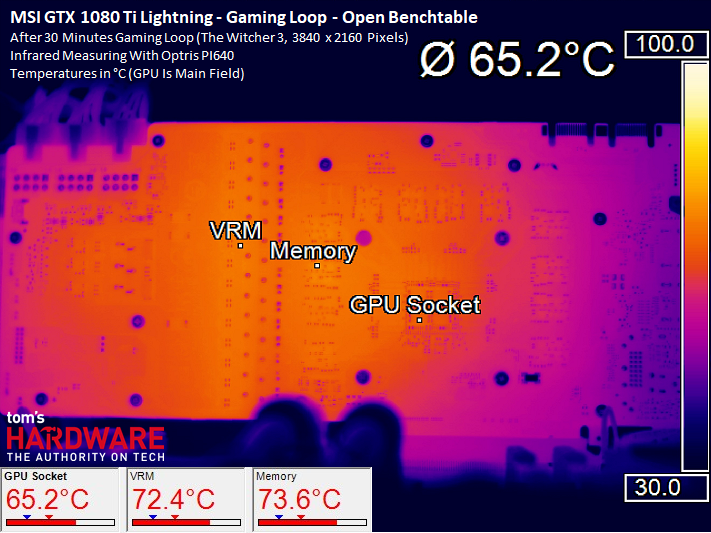
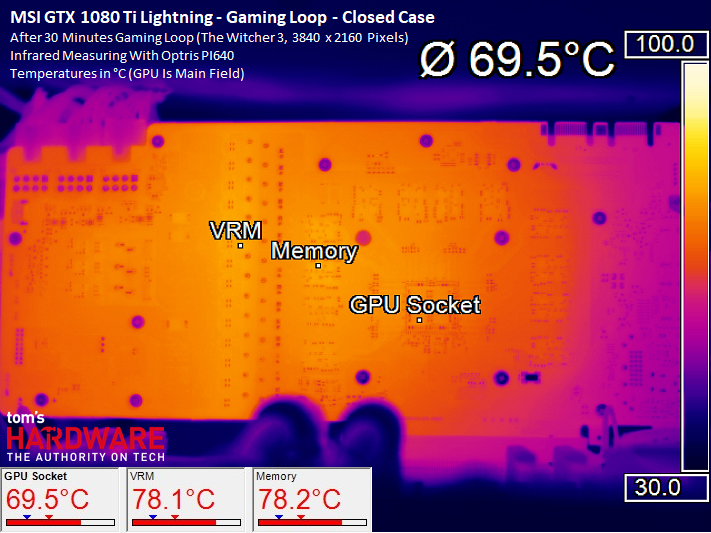
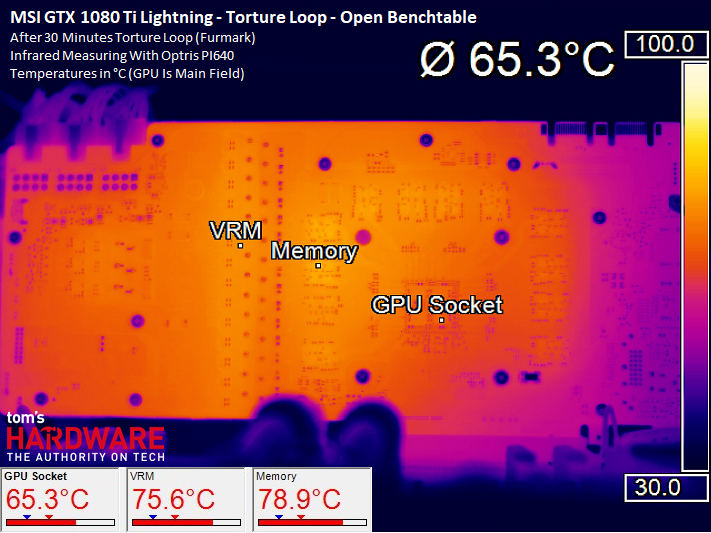
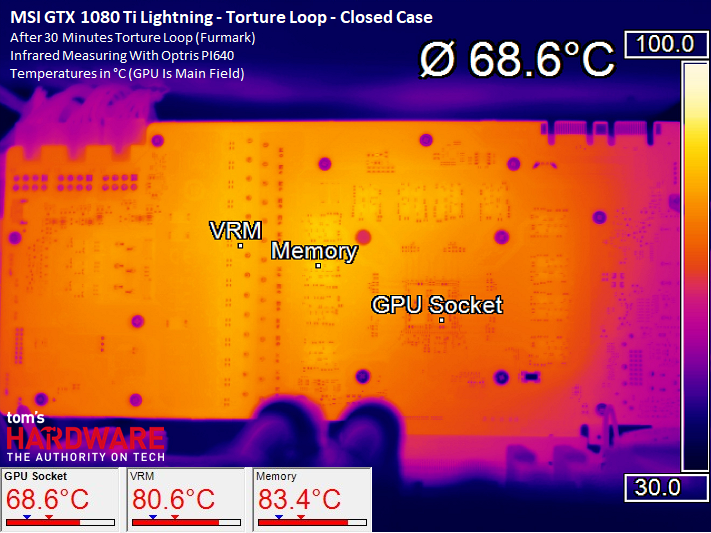















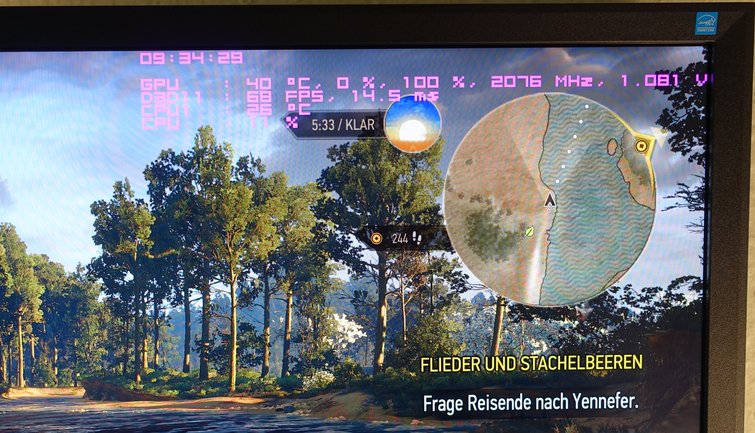















Kommentieren